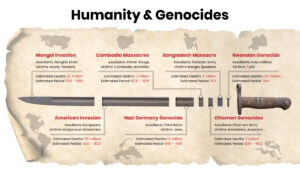Paris, France – The UN has published a draft on climate financing due to be presented at the COP29 in November, laying out the conflicting positions from which the main country blocs will try to clinch the next climate deal.
The document, which AFP consulted Friday, is the basis for negotiating an accord that is due to be reached at COP29 in Baku under Azerbaijan’s presidency.
The “New collective quantified goal”, or NCQG in UN jargon, is intended to replace the engagements made by developed countries to provide $100 billion a year in financing to help developing countries face climate change.
The draft lays out seven rough options that summarise the opposing positions.
Arab countries say developed countries should commit at least $441 billion a year in grants between 2025-2029 to mobilise loans and private financing that would bring the annual total to $1.1 trillion.
African countries insist on an annual objective of $1.3 trillion.
Over the past months, the donor countries — which the Rio summit in 1992 identified as the United States, the European Union, Britain, Japan, Canada, Switzerland, Turkey, Norway, Iceland, New Zealand and Australia — have said these amounts are unrealistic.
Arguing that they now account for less than 30 percent of historic emissions, they want to expand the list of donors to China and Gulf countries, who refuse to consider it.
Canada proposed in the document that the new target be met by countries in the Rio list as well as those that have a gross national income (GNI) above $52,000 per capita or are in the top 10 cumulative greenhouse gas emitting countries with a GNI of $20,000 per capita.
The EU, while accepting that “developed country Parties continue to take the lead in mobilising climate finance from a wide variety of sources, instruments and channels”, said the “collective goal can only be reached if Parties with high GHG-emissions and economic capabilities join the effort.”
The EU wrote that all “global investment flows”, public and private together, must reach at least $1 trillion per year by 2035, without specifying the share that would come from rich countries — a formulation close to that of the United States.
“We now only have 73 days before COP29 begins and Parties need to accelerate their engagement on this top negotiating priority to reach consensus,” COP29 President-Designate Mukhtar Babayev said.








